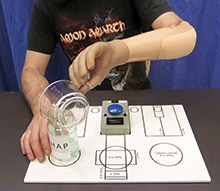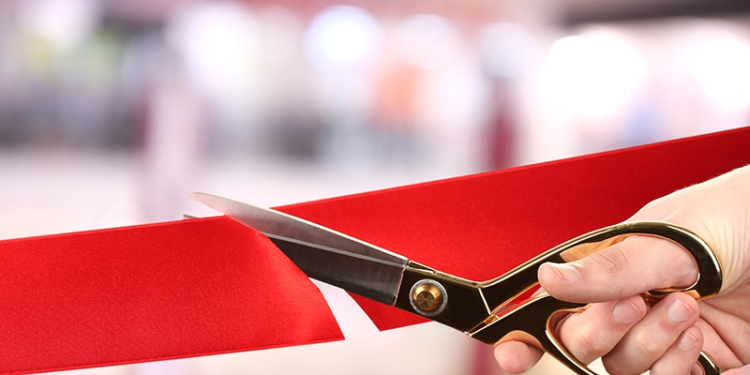
Once the technological neurorehabilitation is complete, the nonfunctioning hand is amputated and ultimately replaced with a prosthetic hand. The patient therefore is given back a voluntarily controllable, functioning hand. Photograph courtesy of The Lancet.
Brachial plexus injuries can permanently impair hand function, yet surgical reconstruction provides only poor results. However, a team of physicians and researchers from Austria and Germany have conducted what they call a “bionic reconstruction technique” on three men from Austria who had lost hand function, successfully enabling prosthetic hand use in all three patients. The technique comprises selective nerve and muscle transfers, elective amputation, and prosthetic rehabilitation to regain hand function. A study presenting the technique and results was published online February 24 in the journal The Lancet.
The brachial plexus, which is the bundle of nerves running down the human arm, controls arm and hand function and is supplied by five roots from the spinal cord. Serious accidents can tear these roots out of the spinal cord, destroying the hand’s function and sensation. In most cases, conventional surgical techniques are unable to help victims of such trauma.
Between April 2011 and May 2014, three patients with global brachial plexus injuries, including lower root avulsions, underwent bionic reconstruction. Treatment occurred in two stages: first, to identify and create useful myoelectric signals for prosthetic control, and second, to amputate the hand and replace it with a mechatronic prosthesis. Before amputation, the patients underwent a specifically tailored rehabilitation program to enhance myoelectric signals and cognitive control of the prostheses, which included training with a hybrid prosthetic arm that was attached to their own injured hand. Final prosthetic fitting was applied as early as six weeks post amputation. After three months the three patients’ mean scores increased on the Action Research Arm Test, the Southampton Hand Assessment Procedure, and the Disabilities of Arm, Shoulder and Hand test.
Oskar Aszmann, head of the Christian Doppler Laboratory for the Restoration of Limb Functions at the Medical University of Vienna’s Department of Plastic and Reconstructive Surgery, developed the technique. He explained what the method involves: “To begin with, a precise exploration needs to be carried out of the global hand/arm function and the remaining nerve branches. These are then biopsied during a surgical procedure and their function checked. If they respond positively, a piece of muscle is removed from the thigh and transplanted into the forearm. The muscle acts as a signal amplifier for the remaining nerves. Muscle contraction generates electrical signals of adequate strength. These myosignals are used to control the new, mechatronic hand.”
Aszmann emphasized that bionic reconstruction is not a form of body enhancement.
Editor’s note: This story was adapted from materials provided by the Medical University of Vienna and The Lancet.




